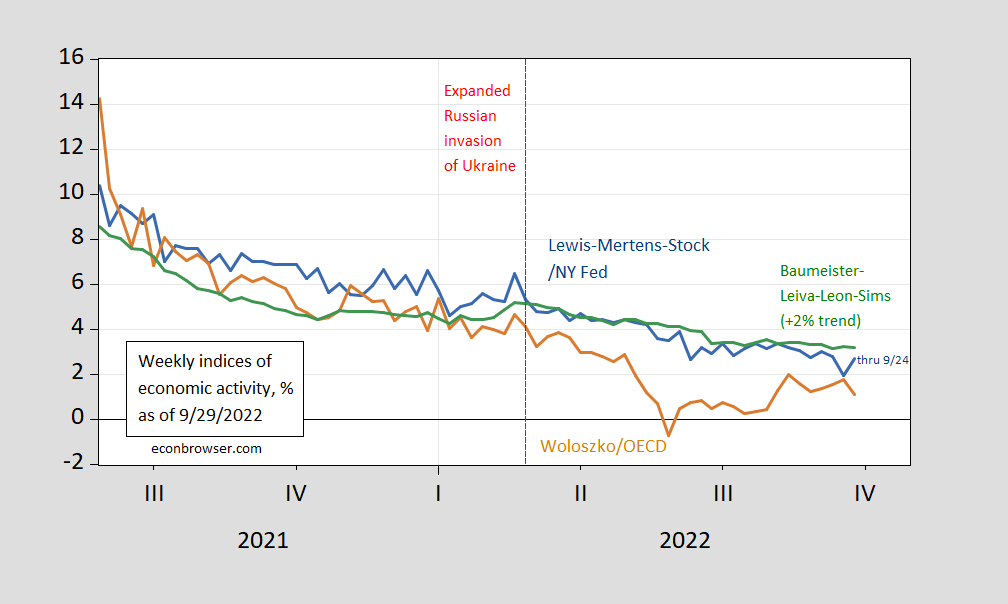As measured by NY Fed WEI, OECD Weekly Tracker, and Baumeister, Leiva-Leon and Sims WECI.
Figure 1: Lewis-Mertens-Stock (NY Fed) Weekly Economic Index (blue), Woloszko (OECD) Weekly Tracker (tan), Baumeister-Leiva-Leon-Sims Weekly Economic Conditions Index for US plus 2% trend (green) Source: NY Fed via FRED, OECD, WECI, and author’s calculations.
The WEI recovered from the previous week, up to 2.7% from 1.9%, while the Weekly Tracker continued to rise. It’s fair to say there some divergence, which is not surprising, given the large differences in methodologies. The WEI relies on correlations in ten series available at the weekly frequency (e.g., unemployment claims, fuel sales, retail sales). The Weekly Tracker — at 1.1% — is a “big data” approach that uses Google Trends and machine learning to track GDP.
The WEI reading for the week ending 9/24 of 2.7% is interpretable as a y/y quarter growth of 2.7% if the 2.7% reading were to persist for an entire quarter. The OECD Weekly Tracker reading of 1.1% is interpretable as a y/y growth rate of 1.1% for year ending 9/24 (this series was revised downward noticeably from last release). The Baumeister et al. reading of 1.2% is interpreted as a 1.2% growth rate in excess of long term trend growth rate. Average growth of US GDP over the 2000-19 period is about 2%, so this implies a 3.2% growth rate for the year ending 9/24.
Since these are year-on-year growth rates, it’s possible we were in a recession in H1 as one observer suggested a month ago, but it (still) seems unlikely.
